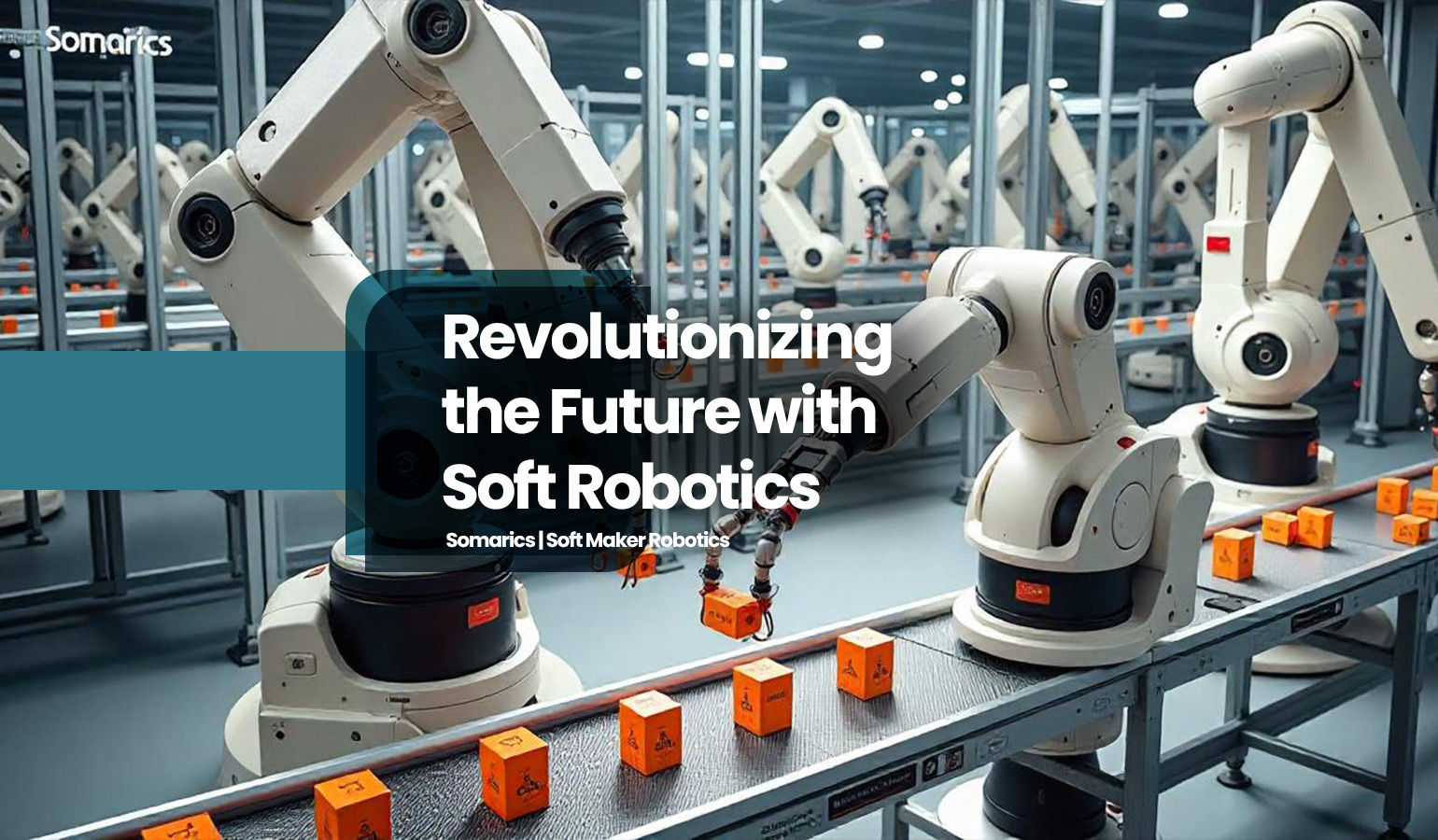In today’s fast-paced manufacturing landscape, staying competitive requires relentless innovation and optimization. Traditional automation systems, while effective for certain repetitive tasks, often lack the adaptability and flexibility needed for more complex operations. This is where soft robotics emerges as a game-changing innovation—poised to transform industries worldwide.
Soft robotics represents the next frontier in automation, combining the precision of traditional robots with the flexibility and dexterity of human hands. This unique combination not only reduces costs but also significantly improves efficiency, ensuring businesses stay ahead of the curve. In this article, we’ll explore five key ways soft robotics can dramatically enhance your business operations, cut costs, and improve overall efficiency.
One of the most immediate benefits of integrating soft robotics into your manufacturing process is its ability to handle delicate products with care. Unlike traditional rigid robotic systems, soft robots are constructed with adaptable, flexible materials that can conform to the shape and texture of the objects they handle.
This gentle touch is particularly beneficial for industries dealing with delicate goods, such as food, pharmaceuticals, and electronics. For instance, in the food and beverage sector, soft robotic grippers can delicately handle fragile items like fruits, vegetables, and pastries without causing damage or bruising. This capability reduces spoilage, extends product shelf life, and ultimately improves profitability by minimizing waste.
Similarly, in electronics manufacturing, soft robots are utilized to handle small, delicate components like microchips and circuit boards with unmatched precision. By avoiding costly damage during production, manufacturers can significantly reduce material waste and avoid production delays. Less waste translates to lower costs, an essential factor for remaining competitive in today’s cost-sensitive markets.
One of the most significant challenges in traditional automation systems is their lack of flexibility. Industries face frequent changes in product design, production volume, or manufacturing processes. Each change often requires substantial retooling, reprogramming, or complete system overhauls—leading to costly downtime and inefficiency.
Soft robots, in contrast, are inherently flexible. Their compliance with various shapes, sizes, and consistencies allows them to adapt to new tasks and materials seamlessly. They are ideal for industries such as manufacturing, e-commerce, and logistics, where product diversity and changing customer demands necessitate an agile approach.
For example, in packaging and logistics, soft robots can easily handle products of varying shapes and sizes without the need for constant adjustments. This versatility reduces changeover times and production delays, enabling businesses to respond effectively to market fluctuations, new product launches, or seasonal surges in demand. As a result, companies can deliver products faster, at lower costs, and with higher customer satisfaction.
In industries relying heavily on manual labor, the risk of worker injury due to repetitive or physically demanding tasks is a significant concern. This is particularly true in sectors like automotive manufacturing, warehousing, and logistics, where workers are required to handle heavy objects, bend repeatedly, or work in uncomfortable positions for extended periods.
Soft robotics can help alleviate these issues by taking over dangerous or ergonomically challenging jobs. For instance, in automotive assembly lines, soft robotic arms can lift and position heavy car components, reducing physical strain on human workers and minimizing the risk of musculoskeletal injuries. Additionally, by automating repetitive and hazardous tasks, soft robotics allows human workers to focus on higher-value activities such as quality control and creative problem-solving.
This collaboration between humans and robots—often referred to as cobots (collaborative robots)—is transforming the way industries approach labor-intensive tasks. Cobots, especially soft robots, are safe to work alongside humans due to their inherently flexible nature, which reduces the risk of accidents. By improving worker safety and job satisfaction, soft robotics enhances operational efficiency and reduces costs associated with workplace injuries and downtime.
Effective resource management is critical for reducing costs and improving efficiency in any business. One of the primary advantages of soft robotics is its ability to streamline operations and make better use of resources—whether it’s labor, space, or equipment.
In the packaging industry, for instance, soft robots can handle a wide variety of product shapes and sizes on a single packaging line, eliminating the need for multiple specialized machines. This consolidation leads to cost savings in equipment investments and reduces ongoing expenses associated with maintaining and operating various systems.
Moreover, soft robots can work continuously without fatigue, enabling them to perform 24/7 operations in industries such as logistics and distribution. This round-the-clock productivity helps companies meet tight deadlines and increase throughput without needing to expand their workforce or operating costs.
By optimizing how resources are utilized, soft robots reduce waste and inefficiencies, leading to significant long-term savings. This makes a compelling case for businesses looking to enhance their operations while remaining environmentally responsible.
Maintaining high product quality is a top priority for businesses across all industries. Soft robots, with their precise and adaptable handling capabilities, contribute to improved product quality in several key ways.
In the pharmaceutical industry, for instance, soft robots can handle delicate pills, capsules, and medical devices with the utmost care, ensuring that they remain intact throughout the manufacturing process. This precision helps maintain product integrity, reduces the risk of contamination, and ensures compliance with stringent regulatory standards.
Similarly, in electronics manufacturing, soft robots can assemble complex components with extreme precision, reducing defects and improving overall product performance. The ability to handle intricate parts with care ensures consistency in production, which in turn reduces the costs associated with rework, returns, and customer dissatisfaction.
Soft robotics is not just a technological innovation—it’s a transformative force that can help businesses cut costs, improve efficiency, and enhance product quality. By integrating soft robotics into your operations, you can gain a competitive edge in an increasingly demanding marketplace.
At SOMARICS, we are at the forefront of this revolution. Our advanced soft robotic solutions are designed to meet the specific needs of industries ranging from manufacturing and logistics to healthcare and electronics. With our flexible manipulators, you can optimize your operations, reduce waste, and improve safety—all while maintaining the highest standards of product quality.
Ready to unlock the full potential of soft robotics? Contact SOMARICS today to discover how we can help transform your business and lead you into the future of automation.







